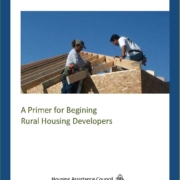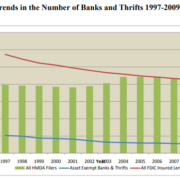HAC News Formats. PDF, Epub, Kindle
September 28, 2011
Vol. 40, No. 20
• September 15-October 15 is National Hispanic Heritage Month • House to consider continuing resolution options on Sept. 29 • Senate committee acts on HUD spending • Budget Control Act’s impact on HUD predicted • HUD posts general section for FY12 NOFAs • HUD offers multifamily energy innovation funds • HUD seeks feedback on healthy homes designation • Housing GSE regulations under review • Information available on Section 502 guarantee program fees • 500 places may lose eligibility for USDA housing programs, HAC estimates • Register for HAC’s senior housing symposium, Nov. 9-10, Seattle
September 28, 2011
Vol. 40, No. 20
SEPTEMBER 15-OCTOBER 15 IS NATIONAL HISPANIC HERITAGE MONTH. President Obama’s declaration is posted at https://www.whitehouse.gov/briefing-room/presidential-actions/proclamations.
HOUSE TO CONSIDER CONTINUING RESOLUTION OPTIONS ON SEPT. 29. The House will choose between two bills passed by the Senate to provide federal funding for the beginning of FY12. H.R. 2017 would fund the government through October 4 and H.R. 2608 through November 18. Both would fund USDA and HUD housing programs at FY11 levels with a 1.5% across the board cut. The bills are at https://thomas.loc.gov (search by bill number).
SENATE COMMITTEE ACTS ON HUD SPENDING. On September 21 the Senate Appropriations Committee approved a FY12 Transportation-HUD spending bill with substantial differences from the House subcommittee bill (see HAC News, 9/14/11). The Senate funded and the House did not fund housing counseling, Sustainable Communities, and Choice Neighborhoods. The Senate provided less funding for CDBG, HOME, Section 202, Section 811, fair housing, and HOPWA – but more for rental assistance vouchers, public housing capital and operating funds, and SHOP. The Rural Innovation Fund did not receive any funding in either bill. Further action on this and other appropriations bills is unclear. An omnibus package combining most of the bills is a likely possibility, with no further action taken on individual measures. The Senate report on S. 1596 is at https://frwebgate.access.gpo.gov/cgi-bin/getdoc.cgi?dbname=112_cong_bills&docid=f:s1596pcs.txt.pdf.
|
HUD Program
(dollars in millions)
|
FY10 Approp.
|
FY11
Approp.b
|
FY12
Admin. Bdgt.
|
FY12
House Bill
|
FY12
Senate Bill
|
|
Cmty. Devel. Block Grants
Sustainable Commun. Initiative
Rural Innovation Fund
|
$4,450
(150)
(25)
|
3,508
(100)
0
|
3,781
150
(25)
|
3,500
0
0
|
3,001
(90)
0
|
|
HOME
|
1,825
|
1,610
|
1,650
|
1,200
|
1,000
|
|
Tenant-Based Rental Asstnce.
Vets. Affairs Spptve Hsg. Vchrs
|
18,184
(75)
|
18,408
(50)
|
19,223
(75)
|
18,467.9
(75)
|
18,872.4
(75)
|
|
Project-Based Rental Asstnce.
|
8,551.5
|
8,882
|
9,429
|
9,028.7
|
9,018.7
|
|
Transforming Rental Asstnce. a
|
–
|
0
|
200
|
0
|
0
|
|
Public Hsg. Capital Fund
|
2,500
|
2,044
|
2,405
|
1,532.1
|
1,875
|
|
Public Hsg. Operating Fund
|
4,775
|
4,626
|
3,962
|
3,861.9
|
3,961.9
|
|
Public Hsg. Revtlztn. (HOPE VI)
|
135
|
100
|
0
|
0
|
0
|
|
Choice Neighbrhd. Initiative
|
65
|
0
|
250
|
0
|
120
|
|
Housing Trust Fund
|
–
|
0
|
1,000
|
0
|
0
|
|
Native Amer. Hsg. Block Grant
|
700
|
650
|
700
|
648.7
|
650
|
|
Homeless Assistance Grants
|
1,865
|
1,905
|
2,372
|
1,901.2
|
1,901.2
|
|
Hsg. Opps. for Persons w/ AIDS
|
335
|
335
|
335
|
334.3
|
330
|
|
202 Hsg. for Elderly
|
825
|
400
|
757
|
600
|
369.7
|
|
811 Hsg. for Disabled
|
300
|
150
|
196
|
196
|
150
|
|
Fair Housing
|
72
|
72
|
72
|
71.9
|
64.3
|
|
Healthy Homes & Lead Haz. Cntl.
|
140
|
120
|
140
|
119.8
|
120
|
|
Self-Help Homeownshp. (SHOP)
|
27
|
27
|
0
|
15.9
|
17
|
|
Housing Counseling
|
87.5
|
0
|
88
|
0
|
60
|
a. New program proposed by the Administration. b. Figures shown do not include 0.2% across the board reduction.
BUDGET CONTROL ACT’S IMPACT ON HUD PREDICTED. Materials from a September 27 webinar by the Center on Budget and Policy Priorities show future funding reductions for discretionary federal programs, including HUD housing, likely to occur under the recent deficit reduction legislation; visit https://www.cbpp.org/research/index.cfm?fa=topic&id=143. The Joint Select Committee on Deficit Reduction (“Super Committee”; see HAC News 8/18/11) now has a website at https://deficitreduction.senate.gov.
HUD POSTS GENERAL SECTION FOR FY12 NOFAs. NOFAs for individual funding programs will be published later. The general section applies to all. Visit https://www.hud.gov/offices/adm/grants/fundsavail.cfm or https://www.grants.gov. Contact HUD’s grants management office, 202-708-0667.
HUD OFFERS MULTIFAMILY ENERGY INNOVATION FUNDS. Applications are due October 20 for Multifamily Energy Pilot grants from an FY10 Energy Innovation Fund, intended to stimulate innovative, replicable approaches for increasing the energy efficiency of existing multifamily properties. Both categories – financing and applied research – require matching funds. Eligible applicants include nonprofits and for-profits with portfolios over 1,000 units, special purpose financing entities like housing trust funds, and CDFIs. Visit https://www.hud.gov/offices/adm/grants/nofa10/grpeif.cfm. Contact Theodore Toon, HUD, 202-708-0001.
HUD SEEKS FEEDBACK ON HEALTHY HOMES DESIGNATION. Comments are due October 14 on a proposal to designate communities as Safe and Healthy Homes Investment Partnerships providing multiple housing-based interventions and leveraging non-federal resources. These places would not receive direct funding, but might receive bonus points in future HUD NOFAs. See Federal Register, 9/14/11 or https://www.regulations.gov. Contact Jon L. Gant, HUD, 202-708-0310.
HOUSING GSE REGULATIONS UNDER REVIEW. The Federal Housing Finance Agency requests comments by November 22 on its plan to review regulations promulgated by its predecessors (HUD’s Office of Federal Housing Enterprise Oversight, HUD’s GSE oversight team, and the Federal Housing Finance Board). Individual regulations will be published for comment as well. Visit https://www.fhfa.gov or https://www.regulations.gov. Contact Alfred M. Pollard, FHFA, alfred.pollard@fhfa.gov, 202-414-3788.
INFORMATION AVAILABLE ON SECTION 502 GUARANTEE PROGRAM FEES. New fees for the program begin October 1. Visit https://www.rdlist.sc.egov.usda.gov to sign up for emails and https://usdalinc.sc.egov.usda.gov/USDALincTrainingResourceLib.do to access documents, including frequently asked questions. Contact the national office guarantee division, 202-720-1452.
500 PLACES MAY LOSE ELIGIBILITY FOR USDA HOUSING PROGRAMS, HAC ESTIMATES. Analyzing recently released 2010 Census data, HAC calculated that 500 cities, towns, and villages could be reclassified as ineligible because their populations have grown. Future research will identify places that have lost population and could become newly eligible. Over 9 million people live in the potentially ineligible places (the report notes that not all would be eligible for housing aid, based on income or other program requirements). After the 1990 and 2000 censuses, legislation “grandfathered in” such places so they remained eligible; it is not known whether Congress will pass such a measure this year. The report, titled Estimating Potential Changes to USDA-RD’s Eligible Area Designations, lists of places, and an archived webinar presentation are available at https://ruralhome.org. Contact Lance George, HAC, lance@ruralhome.org, 202-842-8600.
REGISTER FOR HAC’S SENIOR HOUSING SYMPOSIUM, NOV. 9-10, SEATTLE. Housing Seniors in Rural America: Aging in Place in a Shifting Landscape will feature discussions on aging in place; resources for repairing, developing, and preserving rental and homeownership units; and examples of successful practices in the field of affordable senior rural housing. Register online at https://ruralhome.org or contact Dan Stern, HAC, registration@ruralhome.org.


